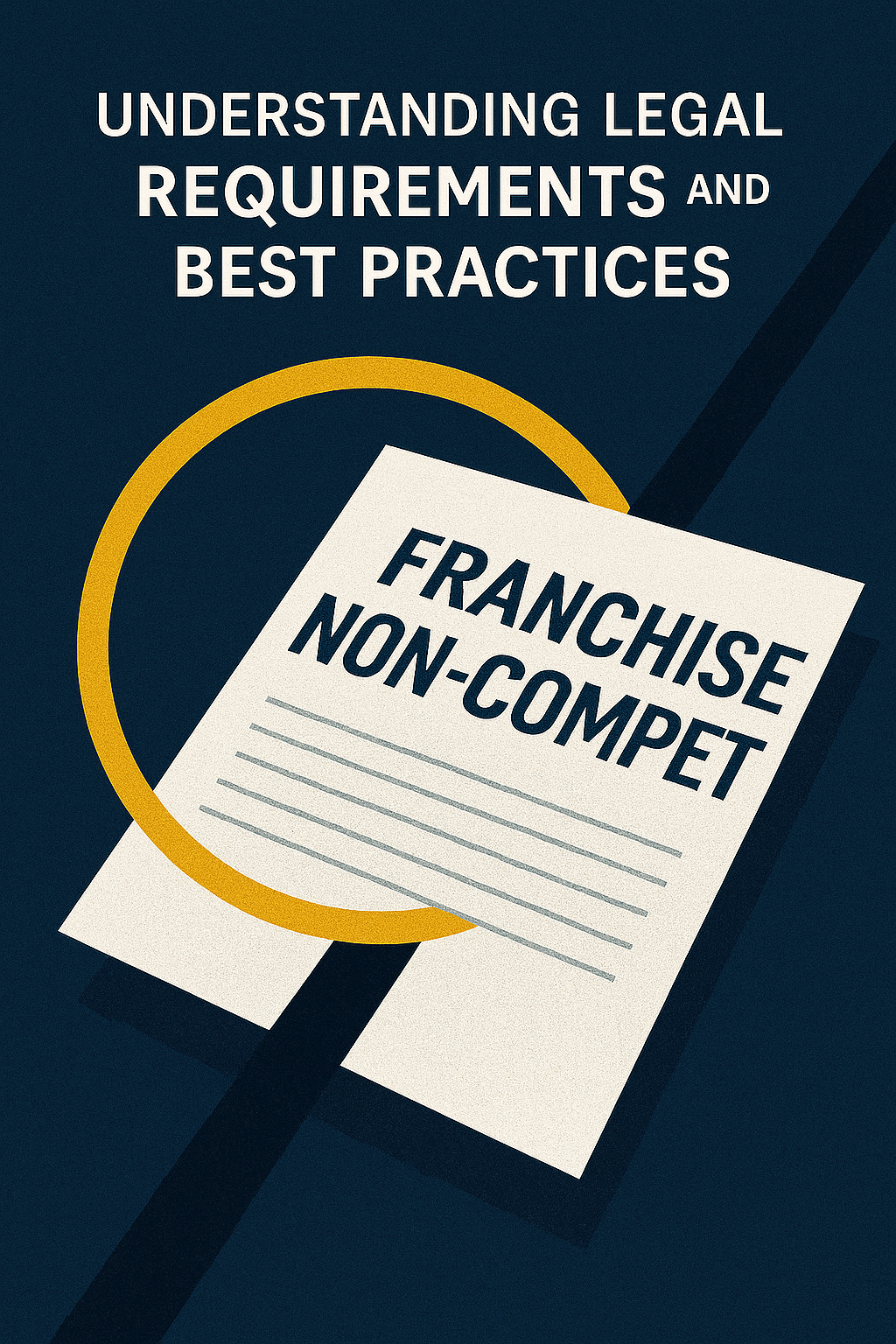Franchises, as business models, offer many advantages, such as established brand recognition, proven operational processes, and a network of support. However, one challenge that franchise owners and managers often face is managing technology and software uniformity across multiple franchise locations. To effectively address this challenge, it is crucial to understand the importance of technology and software uniformity in franchises, the challenges associated with managing them, and how to develop a strategic plan to implement uniformity successfully.
Understanding the Importance of Technology and Software Uniformity in Franchises
Technology and software uniformity play a vital role in maintaining consistency and efficiency throughout a franchise network. When all franchise locations utilize the same technology and software systems, it becomes easier to manage operations, ensure consistent customer experiences, and streamline communication between different franchisees and the franchisor. With uniformity, franchise owners can leverage synergies, enhance overall brand image, and promote brand loyalty among customers.
One of the primary advantages of technology and software uniformity is the standardization of processes. By implementing the same systems across all locations, franchisees can follow standardized workflows, ensuring consistency in operations. This uniformity also enables franchisors to monitor and manage franchise performance effectively, as they can collect and analyze data from different locations using a centralized management system.
The Challenges of Managing Technology and Software Across Multiple Franchise Locations
While the benefits of technology and software uniformity in franchises are significant, managing these systems across multiple locations poses several challenges. One of the main obstacles is ensuring that all franchisees adopt and implement the designated technology and software solutions. Resistance to change and the potential costs involved in system implementation can hinder the smooth adoption of uniformity.
Moreover, franchises often operate in different regions or countries, which may have varying regulations, languages, and infrastructure. Adapting technology and software systems to these diverse locations while maintaining uniformity can be a complex task for franchise owners and managers.
Developing a Strategic Plan for Implementing Technology and Software Uniformity
To overcome the challenges mentioned and successfully implement technology and software uniformity across franchises, it is crucial to develop a strategic plan. This plan should consider the unique needs and requirements of the franchise network, provide clear guidelines for system selection, implementation, and training, and address any potential resistance to change.When creating the plan, franchise owners should collaborate closely with the franchisor to align technology and software choices with the overall brand strategy and vision. It is essential to assess the existing technology and software landscape within the franchise network, identify any gaps or inefficiencies, and determine the desired outcomes of uniformity.
As part of the strategic plan, franchise owners can establish a technology committee or working group consisting of representatives from different franchise locations. This committee can evaluate potential technology and software solutions, conduct a cost-benefit analysis to determine the return on investment (ROI), and make informed decisions regarding system selection and implementation timelines.
Key Considerations for Selecting the Right Technology and Software Solutions for Franchises
When selecting technology and software solutions for franchises, several key considerations need to be taken into account.
Firstly, scalability is crucial. The chosen systems should have the capability to accommodate the growth and expansion of the franchise network. They should be flexible enough to adapt to changes in business needs and market trends.
Secondly, compatibility with existing infrastructure is essential. Franchise owners need to ensure that the selected solutions seamlessly integrate with other systems already in use at the franchisor and franchisee levels. This integration will facilitate smooth data transfer, reporting, and communication across the network.
Additionally, ease of use and user-friendliness should be considered, as franchise employees at different skill levels will be required to use the systems. Training and support must be provided to ensure a successful transition to the new technology and software solutions.
Lastly, data security and protection should be a top priority. Franchise owners must ensure that the selected systems comply with relevant data protection regulations and have robust security features in place to protect sensitive information.
Identifying the Benefits of Technology and Software Uniformity in Franchise Operations
Implementing technology and software uniformity in franchise operations brings a myriad of benefits beyond process standardization. Adopting uniform systems allows for centralized data management and reporting, enabling franchise owners and managers to gain valuable insights into the network’s performance. This data-driven approach empowers decision-making, identifies areas for improvement, and strengthens overall operational efficiency.
Uniformity in technology and software also reduces training and learning curves for employees. With consistent systems in place, franchisees can easily replicate best practices and efficiently onboard new staff members. This continuity fosters a sense of familiarity and confidence among employees, ultimately resulting in better customer service and higher satisfaction levels.
Overcoming Obstacles in Achieving Technology and Software Uniformity Across Franchises
While implementing technology and software uniformity may face challenges, there are several strategies to overcome these obstacles.
Franchise owners can collaborate closely with the franchisor to develop comprehensive training programs that address not only the technical aspects of the systems but also the benefits associated with uniformity. Effective training programs ensure that all employees understand the value of uniformity and the impact it has on their daily activities and franchise success.
Additionally, addressing resistance to change is crucial. Franchise owners should communicate openly with franchisees, addressing their concerns and providing the necessary support during the transition. Demonstrating the long-term advantages and ROI of uniformity can help overcome initial hesitations and foster a sense of unity and shared purpose.
Best Practices for Standardizing Technology and Software Systems in Franchised Businesses
Standardizing technology and software systems requires careful planning and attention to detail. Following best practices can ensure a smooth implementation process:
1. Involve franchisees in the decision-making process: Engage franchisees from various locations to provide input on technology and software choices, as they have valuable insights and on-the-ground experience.
2. Develop a training program: Design a comprehensive training program to ensure that all franchise employees understand how to effectively use the technology and software systems. This training should be ongoing to address new updates and changes.
3. Establish clear guidelines and protocols: Develop standardized operating procedures to ensure uniformity in using the systems across the franchise network. Clear guidelines will help reduce errors, enhance efficiency, and maintain consistency in operations.
4. Regularly review and update technology solutions: Keep up with evolving technologies and industry trends. Regularly review the performance and effectiveness of the chosen systems and make necessary updates to improve operations.
Implementing Effective Training Programs to Ensure Consistency in Technology and Software Usage
Implementing effective training programs is crucial to ensure consistency in technology and software usage across franchise locations. Training programs should be designed to cater to the diverse needs and skill levels of franchise employees.
Franchise owners can conduct onsite training sessions or utilize online training platforms to ensure accessibility for all employees. The training should encompass the technical aspects of using the systems, as well as the best practices and guidelines related to uniformity and standardized processes.
Furthermore, ongoing support should be incorporated into the training programs. Help desks, online forums, or designated experts within the franchise network can provide continuous support, answer questions, and address any challenges that arise during the implementation process.
Leveraging Centralized Management Systems to Maintain Uniformity in Franchise Technologies
Centralized management systems play a critical role in maintaining uniformity in franchise technologies and software. These systems provide a central hub for data storage, reporting, and communication.
By leveraging centralized management systems, franchise owners can effortlessly track the performance of each location, identify areas of improvement, and provide real-time support when necessary. These systems also facilitate seamless communication between different franchisees and the franchisor, enhancing collaboration and knowledge sharing.
In addition, centralized systems ensure that all franchise locations receive updates and improvements simultaneously. This uniformity eliminates any discrepancies that may arise from using different versions of software or outdated technology solutions.
Ensuring Data Security and Protection Throughout the Implementation of Uniform Technology and Software Systems
Data security and protection are critical considerations when implementing uniform technology and software systems across franchises. Franchise owners must take the necessary steps to safeguard sensitive information.
Implementing robust security measures, such as secure data encryption, user access controls, and regular backups, can help mitigate the risk of data breaches. Franchise owners should collaborate with technology providers to understand the security features and ensure compliance with data protection regulations.
Furthermore, appropriate training should be provided to franchise employees to ensure they understand their responsibilities in safeguarding data and following security protocols. Regular audits and assessments can help identify any security vulnerabilities and provide opportunities for improvement.
Tracking Performance Metrics to Measure the Impact of Technology and Software Uniformity on Franchise Success
Measuring the impact of technology and software uniformity on franchise success requires a strategic approach to tracking relevant performance metrics.
Franchise owners should establish key performance indicators (KPIs) tailored to the goals and objectives of promoting uniformity. These KPIs may include metrics such as system adoption rates, customer satisfaction scores, operational efficiency improvements, and ROI on technology investments.
By analyzing these performance metrics regularly, franchise owners can identify trends, make data-driven decisions, and adjust strategies to optimize the benefits of uniformity. Continuous monitoring and evaluation will help franchise owners stay agile and responsive to the evolving needs of the franchise network.
Cost Analysis: Calculating the ROI of Implementing Uniform Technology and Software Solutions
Calculating the return on investment (ROI) of implementing uniform technology and software solutions is a critical step in determining the feasibility and success of such initiatives.
Franchise owners should conduct a comprehensive cost analysis, considering both short-term expenses and long-term benefits. The costs may include system selection and implementation costs, employee training and onboarding expenses, and ongoing maintenance and support fees. The benefits, on the other hand, may include increased operational efficiency, improved customer satisfaction, and financial savings resulting from streamlined processes.
By comparing the costs and benefits over a specific timeframe, franchise owners can assess the financial viability of implementing uniform technology and software solutions. This analytical approach provides greater clarity and justification for the investment decision, helping franchise owners gain buy-in from stakeholders and ensuring optimal resource allocation.
Addressing Potential Resistance to Change When Introducing New Technology and Software Systems
Resistance to change is a common challenge when introducing new technology and software systems to franchise locations. However, there are strategies that franchise owners can employ to address this resistance:
1. Effective communication: Openly communicate the rationale and benefits of implementing uniform technology and software systems. Clearly articulate how these changes will positively impact the franchisees, employees, and the overall success of the franchise network.
2. Engage franchisees in decision-making: Involve franchisees in the decision-making process by seeking their input and feedback. This involvement fosters a sense of ownership and builds trust, making franchisees more inclined to embrace the changes.
3. Proactively address concerns: Be responsive to concerns and questions raised by franchisees. Provide transparent and detailed answers to ensure that all stakeholders understand the reasons behind the changes and how they will be supported throughout the transition.
4. Highlight success stories: Share success stories and case studies from other franchises that have successfully implemented technology and software uniformity. These success stories can serve as inspiration and demonstrate the potential benefits and positive outcomes that can be achieved.
Case Studies: Successful Examples of Managing Technology and Software Uniformity Across Franchise Networks
Examining successful case studies can provide valuable insights and inspiration for managing technology and software uniformity across franchise networks. These case studies showcase real-world examples of franchises that have effectively implemented uniformity:
Case Study 1: XYZ Pizza Franchise
In this case, XYZ Pizza Franchise implemented a cloud-based POS system across all franchise locations. The centralized system facilitated seamless order management, inventory tracking, and reporting. By implementing the system, XYZ Pizza Franchise achieved improved operational efficiency, faster service times, and enhanced customer experiences across all locations.
Case Study 2: ABC Gym and Fitness
ABC Gym and Fitness standardized their member management systems across multiple franchise locations. The unified system enabled consistent membership tracking, streamlined class bookings, and accurate reporting. As a result, ABC Gym and Fitness experienced increased member satisfaction, improved retention rates, and a stronger brand image throughout the franchise network.
These case studies highlight the positive outcomes and benefits that can be achieved by successfully managing technology and software uniformity across franchise networks.
In Conclusion
Managing technology and software uniformity across franchises is a multifaceted task that requires careful planning, effective communication, and strategic implementation. By understanding the importance of uniformity, addressing the associated challenges, and developing a comprehensive plan, franchise owners can successfully implement uniform technology and software systems. This uniformity enhances operational efficiency, strengthens the franchise network, and fosters a unified brand experience for customers. Through ongoing training, performance monitoring, and continuous improvement, franchise owners can leverage technology and software uniformity to drive franchise success and stay ahead in the competitive marketplace.





